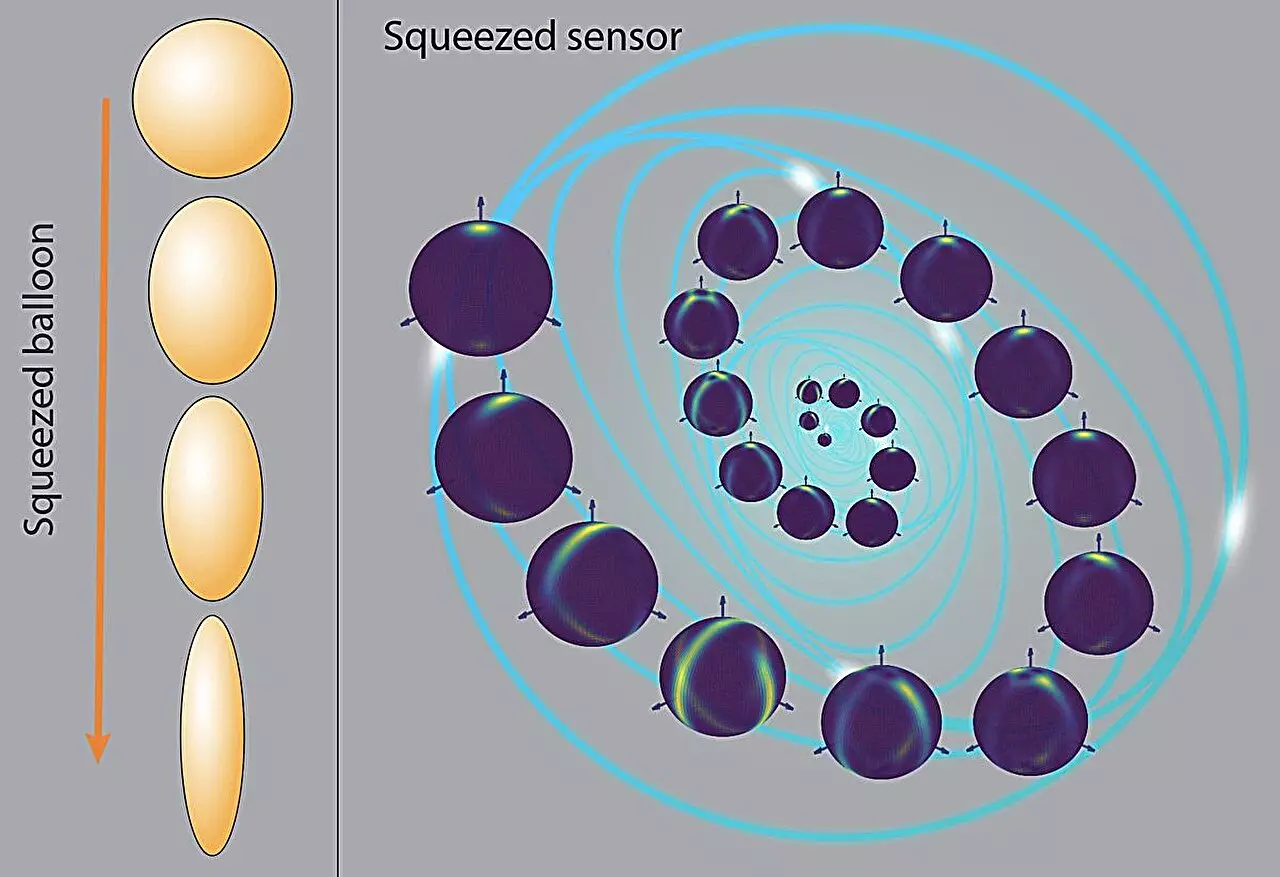Quantum squeezing is an intriguing phenomenon in the realm of quantum mechanics characterized by the manipulation of uncertainty in measurements. In essence, it involves the delicate trade-off between two complementary variables, which can be likened to the stretching and flattening of a balloon when external pressure is applied. In a typical quantum system, measuring the position of a particle with high precision often leads to increased uncertainty in its momentum, exemplifying the Heisenberg uncertainty principle. This principle underpins much of quantum physics and highlights the inherent limitations of measurement at the quantum level.
The principle of quantum squeezing suggests that by decreasing the uncertainty in one variable—like position—you simultaneously increase the uncertainty in another, such as momentum. However, the critical observation is that the total uncertainty does not change; rather, it is redistributed between the variables. This principle paves the way for enhanced measurement capabilities in quantum systems, particularly in situations where a singular aspect requires meticulous scrutiny. For instance, atomic clocks have benefited from squeezing methodologies to achieve unprecedented levels of accuracy.
A recent study conducted by Dr. Le Bin Ho from Tohoku University delves into the promising applications of quantum squeezing for complex measurements that involve multiple variables. Published in Physical Review Research, the paper presents both theoretical frameworks and numerical models that elucidate how squeezing can optimize measurement precision in multi-parameter quantum systems. Dr. Ho’s research focuses specifically on the interaction between a three-dimensional magnetic field and an ensemble of identical two-level quantum systems.
The findings suggest that it is possible to achieve measurement precision that aligns with theoretical maximums, a feat that has eluded previous research efforts, particularly in scenarios where quantum entanglement is not fully realized in all directions. Dr. Ho articulates the broader ambition of this research: enhancing our understanding of quantum squeezing in multifaceted measurement contexts, which could unlock significant advancements in quantum sensing and imaging technologies.
The implications of better utilizing quantum squeezing are vast and multifaceted. One prominent application resides in quantum imaging technology, where improved precision can result in sharper, more accurate representations of objects. Additionally, the advancement of quantum radar systems, which could detect objects with remarkable precision, would have far-reaching effects in both civilian applications and defense technologies.
Furthermore, atomic clocks enhanced through quantum squeezing methodologies could significantly improve the accuracy of GPS systems and other technologies reliant on precise time measurements. The advancements in biophysics, particularly in Magnetic Resonance Imaging (MRI) and the sensitivities of biosensors, could lead to groundbreaking improvements in early disease detection and overall healthcare technologies.
Dr. Ho emphasizes that this research expands the horizons of both quantum science and technology, allowing humankind to harness quantum phenomena for tangible benefits in various fields.
Looking toward the horizon, Dr. Ho expresses a keen interest in further investigating how different forms of noise affect the mechanisms behind quantum squeezing. Understanding the interplay between noise and measurement precision is crucial for refining these methodologies and ensuring their practical applicability in real-world scenarios. As researchers continue to explore these enigmatic quantum principles, the potential for technological breakthroughs expands, promising a future where quantum measurement surpasses existing limitations.
The exploration of quantum squeezing represents a vital frontier in quantum physics that lies at the intersection of theory and application. As scholars like Dr. Le Bin Ho delve deeper into this phenomenon, they bring us closer to unlocking the full potential of quantum mechanics, with implications that could transform industries, enhance technologies, and push the boundaries of our understanding of the quantum world.


Leave a Reply